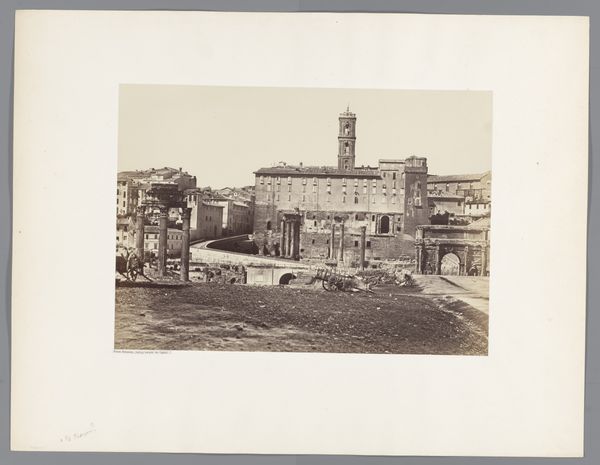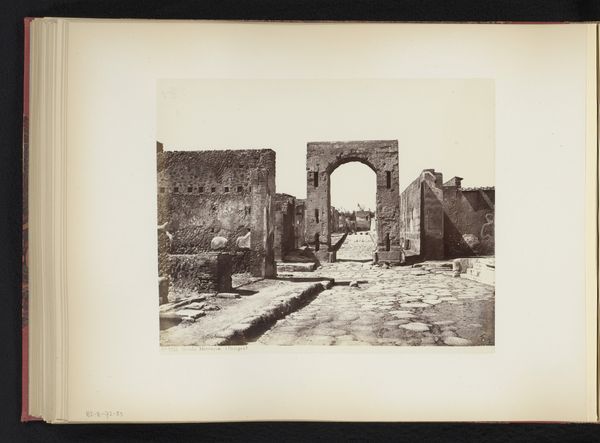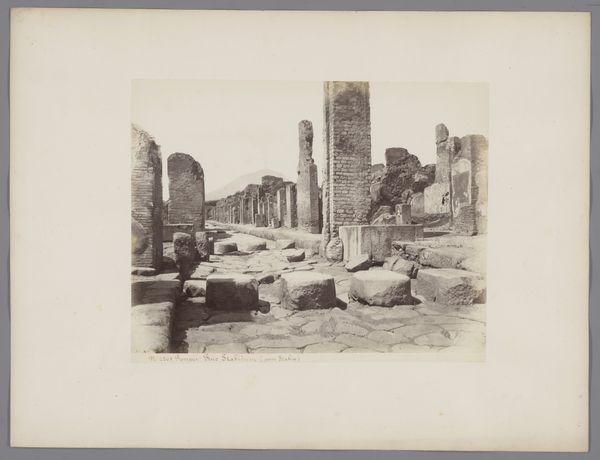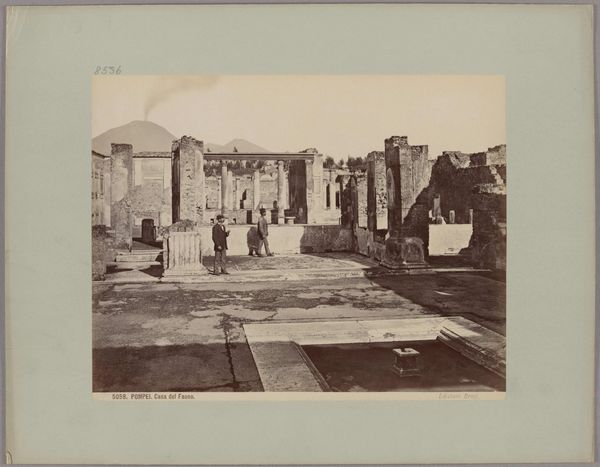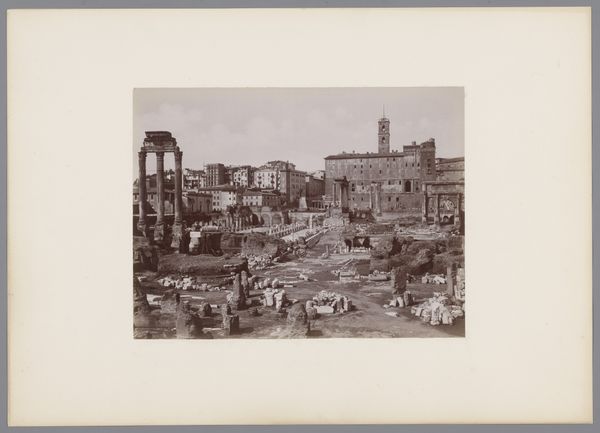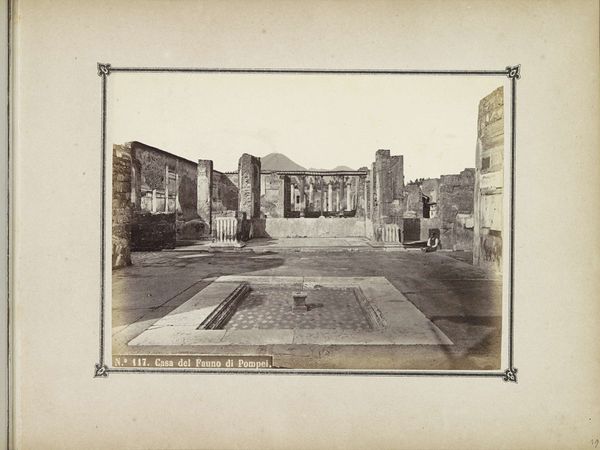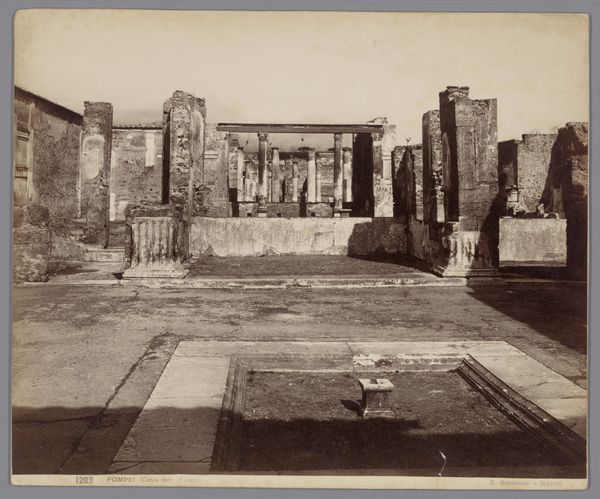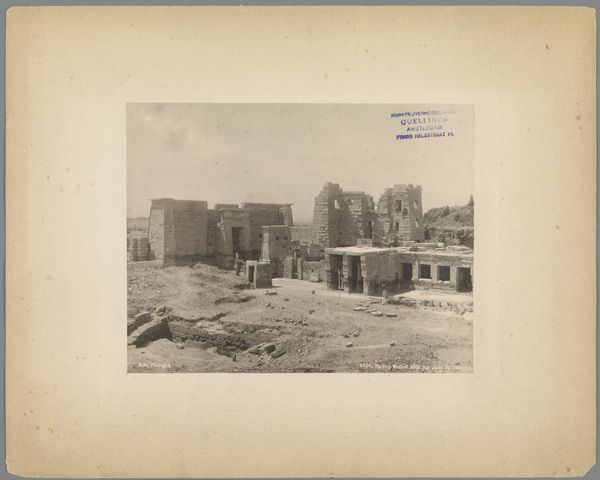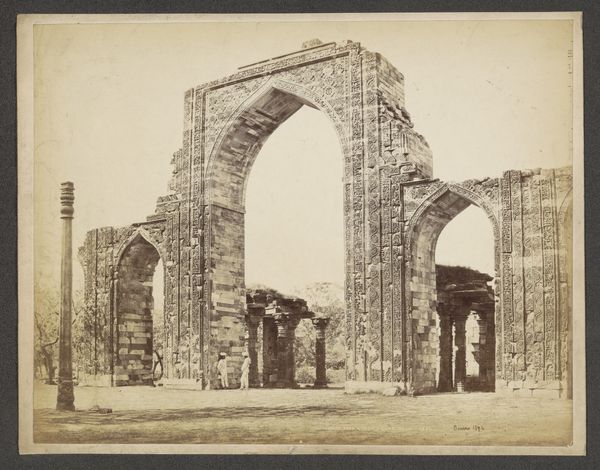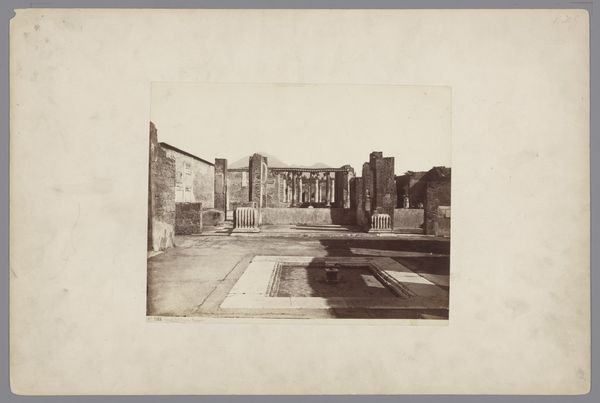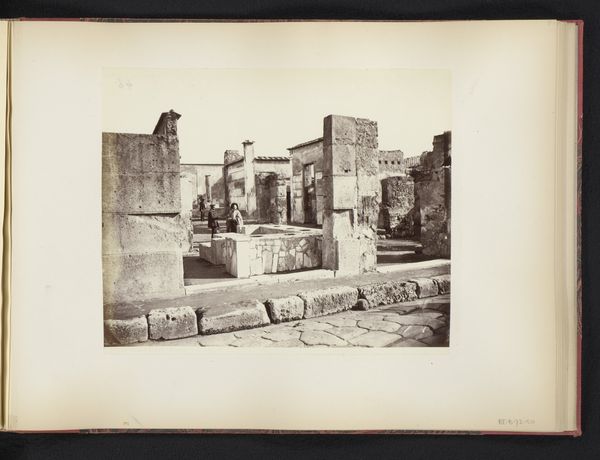
photography, gelatin-silver-print, architecture
#
landscape
#
photography
#
romanesque
#
ancient-mediterranean
#
column
#
arch
#
gelatin-silver-print
#
cityscape
#
architecture
Dimensions: Image: 8 1/16 × 11 3/16 in. (20.5 × 28.4 cm) Sheet: 12 1/8 × 18 1/2 in. (30.8 × 47 cm)
Copyright: Public Domain
Curator: Eugène Constant's "Campo Vaccino (Foro Romano)", dating from between 1848 and 1852, presents a stark gelatin silver print of the Roman Forum. Editor: The overwhelming gray flattens the depth, despite the perspective lines of the architecture. It's haunting and strangely still, almost post-apocalyptic, if I dare use such a term for something depicting classical ruins. Curator: Well, "apocalypse" derives from a Greek word meaning "revelation". And what is ruin if not the revelation of time’s impact? The forum, once the pulsating heart of Rome, now stands in testament to the cyclical nature of power. Look at those columns; broken but proud. For Romans, a column wasn't merely structural; it represented strength, support, and civic virtue. Editor: Yet, Constant's formal choices seem to mute any heroic quality. He positions us far back, minimizing detail, using this overcast light to bleach out any sharp contrast. The tonal range is narrow. Do you think the muted tones convey some social messaging, maybe commenting on power in decline? Curator: Perhaps. But consider the broader iconography of ruins in art of the time. For many, they were picturesque reminders of mortality, of "memento mori." These weren't seen necessarily as indicators of failure. Romans took from the Greeks as later conquerors cannibalized the structures of Rome. It's a continuum. The Arch—triumphal, right?—now eroded, overgrown. It's not simply about lost empire, but how power transforms, shape-shifts across epochs. Editor: Okay, but look at how the photographer organizes the buildings' shapes. Note how he placed the columns that are so much taller and closer in relation to that tower far in the distance on the right. It’s all muted, and quite beautiful in a minimalist kind of way. The photographer directs our sight towards a unified plane. What cultural information is carried when something iconic becomes an image devoid of deep tones or great contrasts? What emotions are really communicated other than muted contemplation? Curator: Perhaps the print embodies a kind of "humilitas," in the etymological sense - it brings the arrogance of empire down to earth, showing the commonality between dust and monuments, shadow and stone. Editor: I like the turn of thought that's been forged through seeing the world and photography presented like this; now when I walk around, the very light on everything seems part of history too. Curator: A fitting conclusion; maybe we leave the audience considering the same connections, of seeing old symbols with new perspectives and tools.
Comments
No comments
Be the first to comment and join the conversation on the ultimate creative platform.
